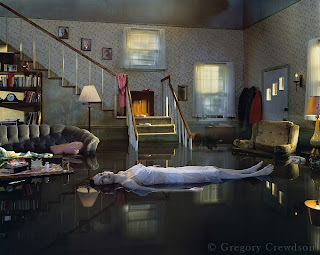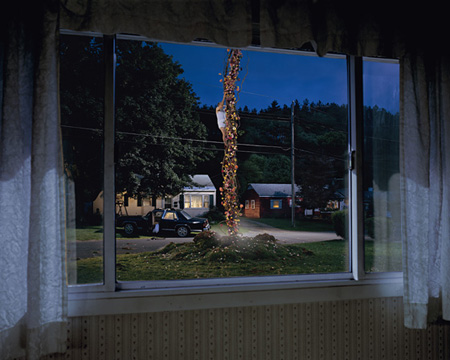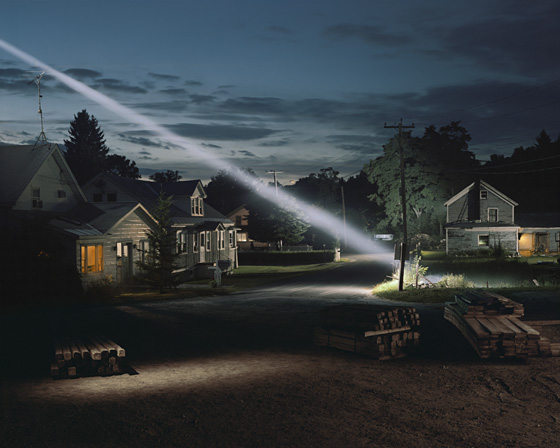Gregrory Crewdson is known widely both as an artist and as a lecturer in the photography department at the Yale University. But not many people know that he did a commercial assignment for HBO as well. Apparently it was his first one ever.
He shot a poster that was later used for promotion of third season of the highly acclaimed TV series called "Six feet under". One of the vice presidents of marketing at HBO saw Crewdson’s series "Twilight" at his exhibition in Guggenheim and hired him for the job. The isolation, alienation and tension she found in his work, played very well with the tone of the TV series.
I only found out recently that my favourite poster from "Six feet under" was done be Gregory Crewdson himself. For all these years I’ve thought that somebody who had done it was just inspired by Crewdson’s images.















